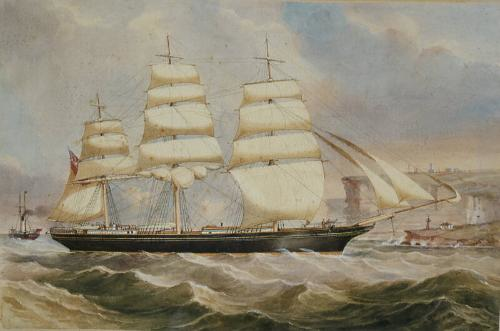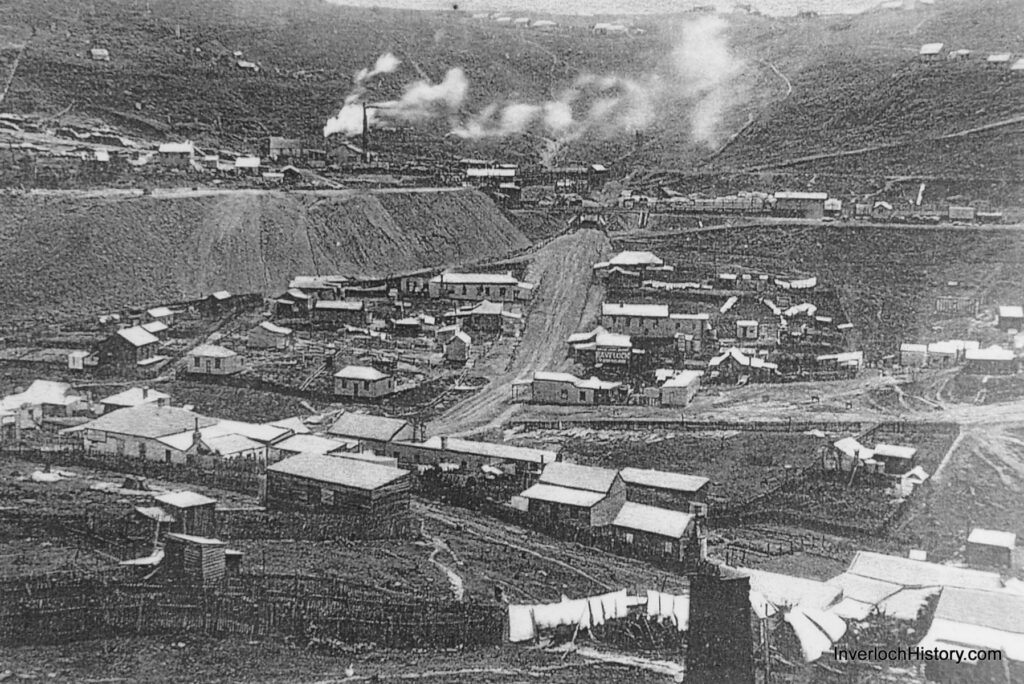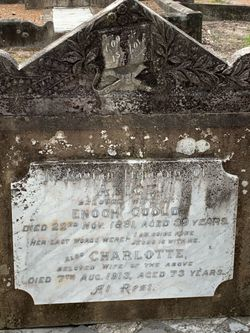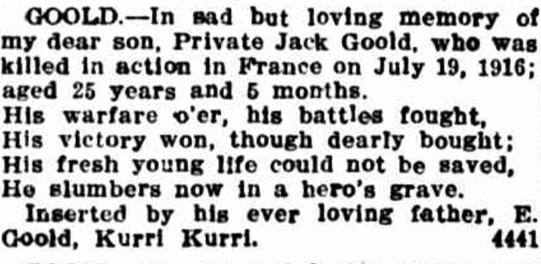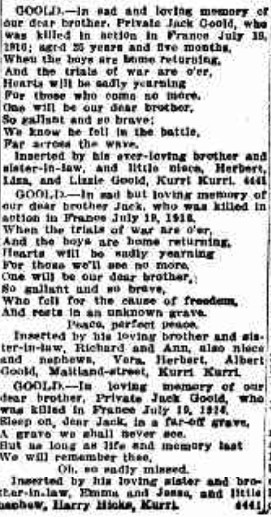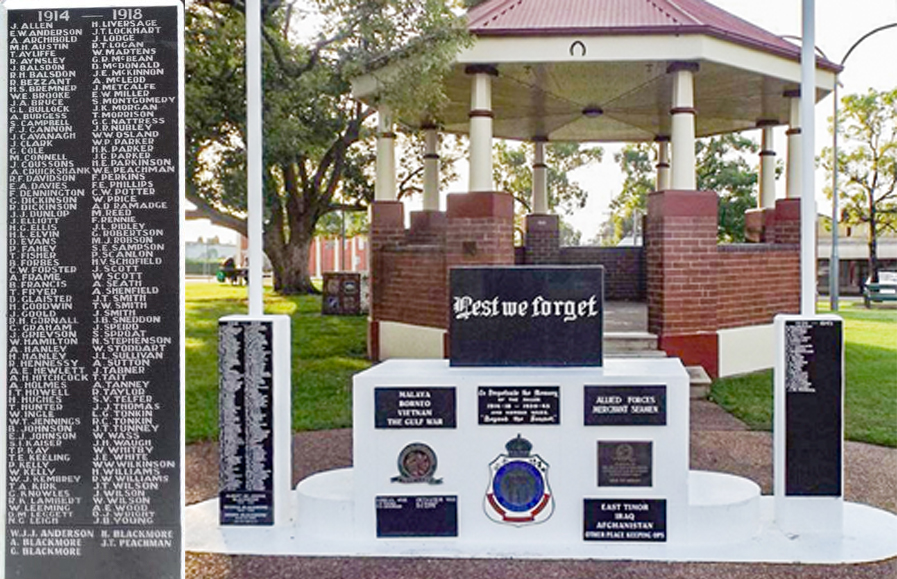John GOOLD
Eyes brown, Hair brown, Complexion dark
Private Jack Goold — “My heart’s yearning for what is left of my dear boy”
Can you help find Jack?
John “Jack” Goold’s body was never found after the Battle of Fromelles, and there are no records of his burial.
A mass grave was found in 2008 at Fromelles, a grave the Germans dug for 250 Australian soldiers they recovered after the battle. As of 2024, 180 of these soldiers have been able to be identified via DNA testing.
Jack may be among these remaining 70 unidentified men. There is still a chance to identify him — but we need help. We welcome all branches of his family to come forward to donate DNA to help with his identification, especially those with roots in in Newcastle, and Kurri Kurri, Hunter Valley, NSW and Lancashire, England, or Gloucestershire, where his parents were born.
See the DNA box at the end of the story for what we do know about his family.
If you know anything of contacts for Jack, please contact the Fromelles Association.
Early Life
John Goold, known to his family as “Jack,” was born on 14 February 1891 in New Lambton, New South Wales, the youngest of Enoch and Alice Goold’s (née Morris) eight children:
- Herbert (1875–1941) married Eliza Horsey
- Annie (1876- after 1884) Newcastle.
- Thomas (1879-1881) died infancy, Lancashire
- Richard (1881–1949) married Ann Lamb
- Elizabeth (1883–?) married Samuel Turner Walls, divorced
- Sarah (1885-1886) died infancy
- Emma (1887–1964) married Jesse Barratt Hicks
- John (Jack) (1891–1916)
Enoch was a coal miner who was born in Cinderford, Gloucestershire, one of many children of John and Sarah Goold (née Langford). Alice was the daughter of Richard Morris and Elizabeth Hayes of Aspull, near Wigan, in Lancashire. Jack’s parents and their first four surviving children had migrated to New South Wales Australia from Lancashire, England in 1884. The move was part of the wave of English mining families who brought skills to the rapidly growing Newcastle coalfields. Their move was sponsored by John Hayes of Lambton, Alice’s relative, and her Morris family seems to be responsible for paying the deposit. They arrived in July 1884 on the clipper ship Abergeldie and they settled in Lambton, Newcastle, NSW, where they lived for 18 years.
Enoch worked at the Lambton Colliery, which was owned by the Scottish Australian Mining Company Limited. By 1888 Enoch was involved in Community issues – he was a petitioner for Lambton to become a municipality. He was later involved in other responsible Civic activity.
Source - https://www.ancestry.com.au/search/collections/2172/records/2335385.
All the children would have gone to the New Lambton school, which opened in 1884 (and is still there).
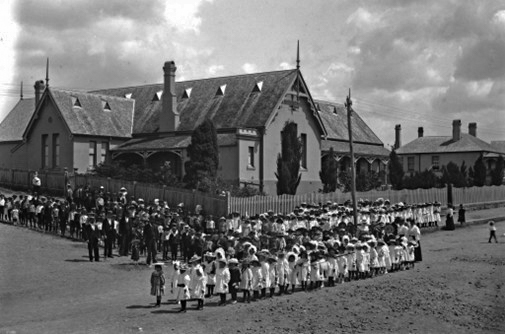
Life seemed to be going well for the family. However, in November 1891 when Jack was only 9 months old, his father broke his thigh and then his mother, Alice, died five days later, leaving the older children involved in the care of the three preschoolers. Two years later, Enoch married Charlotte Lewis. After 18 years in Lambton, the family moved to Victoria in 1902 to the mine at Outtrim in the Latrobe valley rural distict. Enoch worked for the Outtrim-Howitt British Consolidated Coal Company.
Jack finished his schooling in Outtrim and then worked in the mines. By 1913, the family made a final move - back to New South Wales, to the Hunter Valley mining centre of Kurri Kurri. Charlotte died (73 years old) and was buried alongside Jack’s mother Alice in Newcastle. Enoch and Jack lived at Brunker St, Kurri Kurri and Jack’s brother Richard and his wife Ann were at Maitland St., Kurri Kurri.
Off to War - Gallipoli
Jack enlisted in the Australian Imperial Force on 8 June 1915 at Liverpool, New South Wales and was assigned to the 7th Reinforcements of the 1st Battalion. He was 24 years old. With the battle ongoing at Gallipoli, military training in Australia for the new recruits was brief – Jack embarked from Sydney on 14 July 1915 aboard the HMAT A67 Orsova, bound for Egypt. The Kurri Kurri community took great pride in the number of local men who had enlisted.
In December 1915 a Roll of Honour was unveiled at the Congregational Church to honour the men of the congregation who had gone to the front — Jack’s name was among them. Reports in the paper said:%On Sunday evening at the Congregational Church a special service was held for the purpose of dedicating a Roll of Honour containing the names of those members of the congregation who had gone to the front. Special anthems were rendered by the choir, and the ceremony was performed by Mr. E. Evans, father of Lance-Corporal Evans of the Light Horse, the first soldier from the district to fall in battle.
The roll contains the following names: Corporal David Evans; Privates J. Rodgers, George Pringle, H. Griffiths, S. Edwards, H. Hughes, J. Dales, W. Davies, J. Goold, F. Humphries, C. Evans, T. Davies, J. Corlotte, E. H. Donne, T. Thomas, A. McDonald and L. Hawell.
Source: Kurri Kurri. (22 December 1915). Newcastle Morning Herald and Miners’ Advocate (NSW : 1876–1954), p. 8. http://nla.gov.au/nla.news-article137967548
After some further training in Egypt, Jack arrived at Anzac Cove, Gallipoli on 4 November 1915. While there were no attacks during his time in Gallipoli, there was still sniper fire and bombing ongoing in the trenches. During the evacuation of Gallipoli in December 1915, Jack was one of the few – 19 - left to cover the withdrawal — a moment he later described with quiet pride. This was captured in a newspaper report:%Private Goold enlisted in the 7th Reinforcements of the 1st Battalion in June 1915, and embarked from Liverpool on 14th July for Egypt, serving in Gallipoli.
In a letter to his brother in February last, after the evacuation, he stated he was one of 19 left on outpost duty during the evacuation, with instructions to snipe the Turks and hang on to the last man till the beach was clear, and although they were half an hour’s walk from the beach, the whole of them were well out in the bay before the enemy discovered the evacuation.
Source: Kurri Kurri. (31 August 1916). Newcastle Morning Herald and Miners’ Advocate (NSW : 1876–1954), p. 6. http://nla.gov.au/nla.news-article133888869
Egypt and the Western Front
With the ‘doubling of the AIF’ as it expanded from two infantry divisions to five, major reorganisations were underway. The 53rd Battalion was formed on 16 February 1916 and was made up of Gallipoli veterans from the 1st Battalion and the new recruits from Australia. The Gallipoli soldiers in the 53rd were not slow in pointing out to whoever would listen that they were the “Dinkums” and the new recruits were the “War Babies”.
Source: - AWM4 23/70/1, 53rd Battalion War Diaries, Feb-July 1916, page 3
Training for all continued. In March they were sent to Ferry Post, on foot, a trip of about 60 km that took three days. It was a significant challenge, walking over the soft sand in the 38°C heat with each man carrying their own possessions and 120 rounds of ammunition. Many of the men suffered heat stroke.
Once there, they remained at Ferry Post guarding the Suez Canal from any potential threats posed by the Ottoman Army. On 16 June they began the move to the Western Front. 32 officers and 958 soldiers of the 53rd left Alexandria on 19 June on the troopship HMT Royal George, bound for Marseilles, France to become part of the British Expeditionary Force on the Western Front. They arrived in Marseilles on 28 June and immediately entrained for a 62-hour journey north to Hazebrouck before finally marching into the camp at nearby Thiennes in northern France.
During their trip it was noted that their ‘reputation had evidently preceded them’, as they were well received by the French at the towns all along the route. Source - AWM4 23/70/2 53rd Battalion War Diaries February - June 1916, p. 4
This area near Fleurbaix was known as the “Nursery Sector” – a supposedly relatively quiet area where inexperienced Allied troops could learn the harsh realities of Western Front trench warfare against the Germans. But the quiet times and the training period did not last long. On 8 July they began a 30 km march to Fleurbaix and on 10 July, the 53rd entered trenches for the first time. The front near Fleurbaix was anything but calm. Rain flooded the communication trenches, artillery fire harassed supply lines, and the soldiers dug in amid the mud and barbed wire of No-Man’s-Land.
The Battle of Fromelles
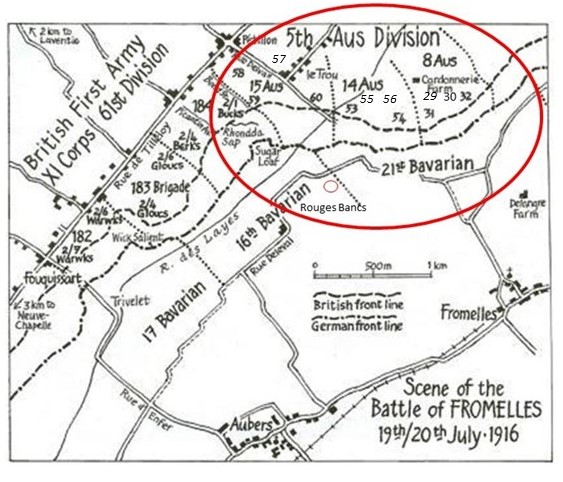
The men knew something was coming. They rehearsed attacks in replica trench systems, inspected bayonets and watched as huge guns rolled into place behind the lines. Then on 16 July they moved up for an attack—only to have it postponed due to weather. The delay proved torturous. Private Jim Granger (4784), a young Dorrigo soldier, described the tension in his dugout:
“We were held in suspense for three days… like a criminal waiting to hear the verdict. We had no dugouts where we were in the supports and shrapnel was bursting all round.”
On the 19th, heavy bombardment was underway from both armies by 11.00 AM. At 4.00 PM the 54th Battalion rejoined on their left. All were now in position for battle.

Zero Hour for advancing from their front-line trenches was to be 5.45 PM, but the Germans knew this attack was coming and were well-prepared. They opened a massive artillery bombardment on the Australians at 5.15 PM, causing chaos and many casualties. The main objective for the 53rd was to take the trenches to the left of a heavily armed, elevated German defensive position, the ‘Sugar Loaf’, which dominated the front lines. If the Sugar Loaf could not be taken, the 53rd and the other battalions would be subjected to murderous enfiladed fire from the machine guns and counterattacks from that direction.
As they advanced, they were to link up with the 60th and 54th Battalions on their flanks. The Australians went on the offensive at 5.43 PM. They moved forward in four waves – half of A & B Companies in each of the first two waves and half of C & D in the third and fourth. They did not immediately charge the German lines, they went out into No-Man’s-Land and lay down, waiting for the British bombardment to lift. Private Arthur Crewes (4755) wrote of the time:
“At 5.43 pm the signal for the charge sounded, and over the top we went into the face of death, shells bursting, machine guns rattling and rifles crackling.”
At 6.00 PM the German lines were rushed. The 53rd were under heavy artillery, machine gun and rifle fire, but were able to advance rapidly. Corporal J.T. James of C Company (3550) reported:
“At Fleurbaix on the 19th July we were attacking at 6 p.m. We took three lines of German trenches”
As below, the 14th Brigade War Diary notes that the artillery had been successful and “very few living Germans were found in the first and second line trenches”, but within the first 20 minutes the 53rd lost ALL the company commanders, ALL their seconds in command and six junior officers.
Source - AWM C E W Bean, The AIF in France, Vol 3, Chapter XII, pg 369
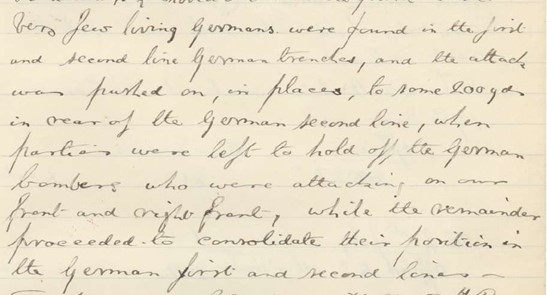
Some of the advanced trenches were just water filled ditches, which needed to be fortified by the 53rd to be able to hold their advanced position against future attacks.
They were able to link up with the 54th on their left and, with the 31st and 32nd, occupied a line from Rouges Bancs to near Delangre Farm, but the 60th on their right had been unable to advance due to the devastation from the machine gun emplacement at the Sugar Loaf. They held their lines through the night against “violent” attacks from the Germans from the front, but their exposed right flank had allowed the Germans access to the first line trench BEHIND the 53rd, requiring the Australians to later have to fight their way back to their own lines. By 9.00 AM on the 20th, the 53rd received orders to retreat from positions won and by 9.30 AM they had “retired with very heavy loss”.
Source - AWM4 23/70/2 53rd Battalion War Diaries July 1916 page 7
Of the 990 men who had left Alexandria just weeks before, the initial count at roll call was 36 killed, 353 wounded and 236 missing:
“Many heroic actions were performed.”
To get some perspective of the battle, when Charles Bean, Australia’s official war historian, attended the battlefield two and half years later, he observed a large quantity of bones, torn uniforms and Australian kit still on the battlefield. The final impact of the battle on the 53rd was 245 soldiers were killed or died from their wounds and, of this, 190 were not able to be identified.
After the Battle
Jack’s father Enoch was advised by telegram on 28 August 1916 that Jack had been killed in action, but no other details were available. There are no witness statements from the Red Cross or in Jack’s files, so we do not know exactly happened to him, other than he was among the many “missing” after the battle. Given the scale and impact of the battle, the Army was challenged to provide any detailed feedback to the families. Jack’s father wrote anxiously to the Base Records Office in Melbourne on 7 September seeking more details:
“I received a telegram on August 28th informing me that my son was killed in action on July 19th 1916, but it did not state whether he was killed in Egypt or France. The last we heard from the deceased soldier was from Egypt. Anxious to know what front he fell on, please forward all particulars at your earliest convenience.”— Letter from Enoch Goold, Kurri Kurri, 7 September 1916
Months later, still without further word from the front, Enoch wrote again to Base Records on 23 March 1917, asking for his son’s belongings:
“I would especially like to receive his pocket wallet and letter case… Trusting you will gratify my heart’s yearning for what is left of my dear boy.”

Jack’s personal effects were returned from London aboard the Themistocles in August 1917 - two wallets, coins, letters, photos, postcards, and a campaign medal — tangible reminders of the young miner from Kurri Kurri who never came home. Enoch was very close to his son and there were numerous tributes from his family and friends in the newspapers over the years:
“Friends think of him not only as a hero who fell for King and Country,But as the old Book says — a man who died for men. Greater love hath no man than to lay down his life for his friends.”— Inserted by his grief-stricken father, Enoch Goold, Kurri Kurri
Even today he is remembered. Hunter miltary and local historian Gary Mitchell has also honoured Jack’s memory at Sandgate Cemetery, where his parents are buried:
Let us remember a fallen soldier of The Great War memorialised at Sandgate Cemetery. I have placed poppies at the Goold memorialised gravesite in remembrance of the service and supreme sacrifice of their son Jack for God, King and Country.”
Private John “Jack” Goold was awarded the 1914-15 Star Medal, the British War Medal, the Victory Medal, a Memorial Plaque and a Memorial Scroll. He is commemorated in multiple locations across Australia and France:
- VC Corner Australian Cemetery and Memorial, Fromelles, France — Panel 8
- Australian War Memorial, Canberra — Roll of Honour, Panel 157
- Kurri Kurri War Memorial, Kurri Kurri, New South Wales.
- Kurri Kurri Congregational Church Roll of Honour
- Kurri Kurri Methodist Church Roll of Honour, New South Wales.
- Kurri Kurri Rose Lodge (No. 8863) Roll of Honour — member of the Protestant Alliance Friendly Society of Australasia.
Finding Jack
Jack’s remains were not recovered, he has no known grave. After the battle, the Germans recovered 250 Australian soldiers and placed them in a burial pit at Pheasant Wood. This grave was discovered in 2008 and since then efforts have been underway to identify these soldiers by DNA testing from family members. As of 2024, 180 of the soldiers have been identified, including 15 of the 190 unidentified soldiers from the 53rd Battalion.
We welcome all branches of Jack’s family to come forward to donate DNA to help with his identification - particularly from descendants of the Goold or Morris lines, connected to New Lambton and Kurri Kurri, New South Wales, or to Lancashire, England or Gloucestershire, where his parents were born. If you know anything of family contacts, please contact the Fromelles Association. We hope that one day Jack will be named and honoured with a known grave.
Please visit Fromelles.info to follow the ongoing identification project and Jack’s story.
DNA samples are being sought for family connections to
| Soldier | John “Jack” Goold (1891–1916) |
| Parents | Enoch Goold (1853–1929), born Cinderford, Gloucestershire, England and Alice Morris (1852–1891), born Aspull, Lancashire, England |
| Siblings | Herbert Goold (1876–1941), born Shevington, Lancashire, m. Eliza Horsey | ||
| Annie Goold (1877– ), born Shevington, Lancashire | |||
| Richard Goold (1881–1949), born Wigan, Lancashire, m. Ann Lamb (1884–1961) | |||
| Elizabeth Goold (1883– ), born Lancashire, m. Samuel Turner Walls (1883–1944) | |||
| Emma Goold (1887–1964), born Lambton, New South Wales, m. Jesse Barratt Hicks (1887–1957) | |||
| Thomas (1879-1881) died infancy, Lancashire | |||
| Sarah (1885-1886) died infancy |
| Grandparents | |||
| Paternal | John Goold (1811–1890), born Camerton, Lancashire, England, m. Sarah Langford (1817–1891), born Timsbury, Somerset, England | ||
| Maternal | Richard Morris (1827–1885), born Aspull, Lancashire, England, m. Elizabeth Hayes (1828–1897), born Burnley, Lancashire, England |
Seeking DNA Donors

Contacts
(Contact: carla@fromelles.info or geoffrey@fromelles.info).
(Contact: army.uwc@defence.gov.au or phone 1800 019 090).
Donations
If you are able, please contribute to the upkeep of this resource.
(Contact: bill@fromelles.info ).

